PESTS AND DISEASES OF FORESTRY IN NEW ZEALAND
Bronze bug, Thaumastocoris peregrinus: A new Eucalyptus pest in New Zealand
From Surveillance Volume 39, No. 2, June 2012.
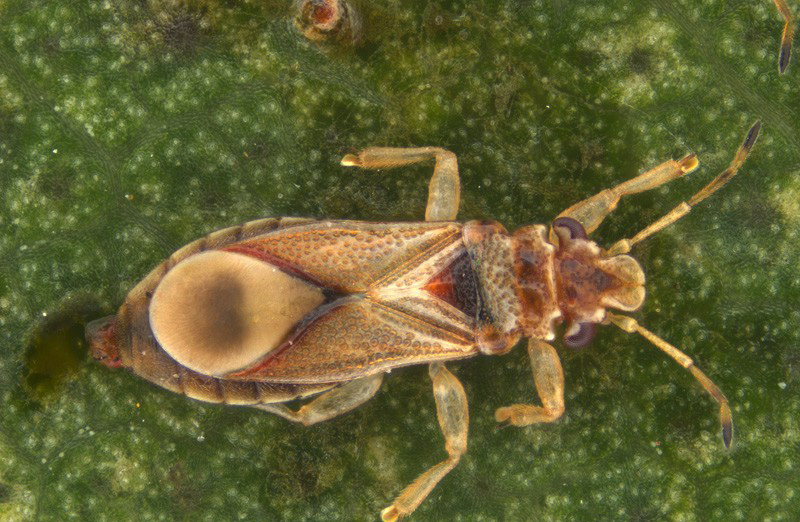
A noteworthy Australian bug not previously known in New Zealand has been found on urban street trees in Auckland. This insect has the potential to be a pest on eucalypt trees, which are common throughout the country.
Thaumastocoris peregrinus (Hemiptera: Thaumastocoridae), also known as the bronze bug, is a sapsucker that feeds on the leaves of a variety of Eucalyptus species. The bug is light brown with darker areas and has a flattened body about 3 mm in length (Figures 1 and 2). The black sculptured eggs are laid on leaves, either singly or in groups (Figure 3). Adults and nymphs may be found in large numbers on the leaves and their feeding results in the leaves turning from silver and spotted to rusty red (Figures 4 and 5). In severe infestations the foliage will wither and drop and this can lead to branch dieback (Nadel et al., 2010).
On 10 March 2012 T. peregrinus was found on Eucalyptus nicholii during a routine survey conducted as part of the Ministry for Primary Industries (MPI; formerly MAF) High Risk Site Surveillance programme. The SPS Biosecurity Ltd surveyor who collected the specimens had seen T. peregrinus in an illustrated article on the New Zealand Farm Forestry Association website and suspected that the specimen might be this species. A sample was sent to Scion for identification, with an indication that it needed to be examined in their quarantine facility. Specimens were identified and validated by morphological examination at Scion and subsequently confirmed by molecular techniques at the Plant Health and Environment Laboratory (PHEL) in Auckland.
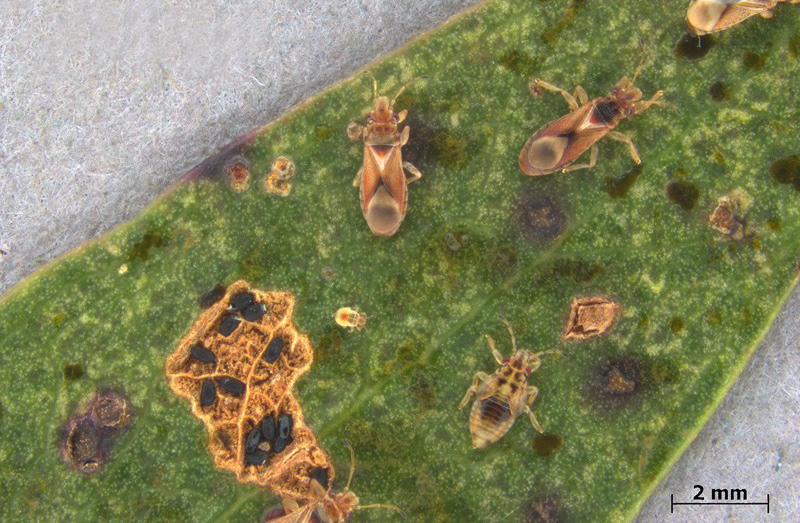
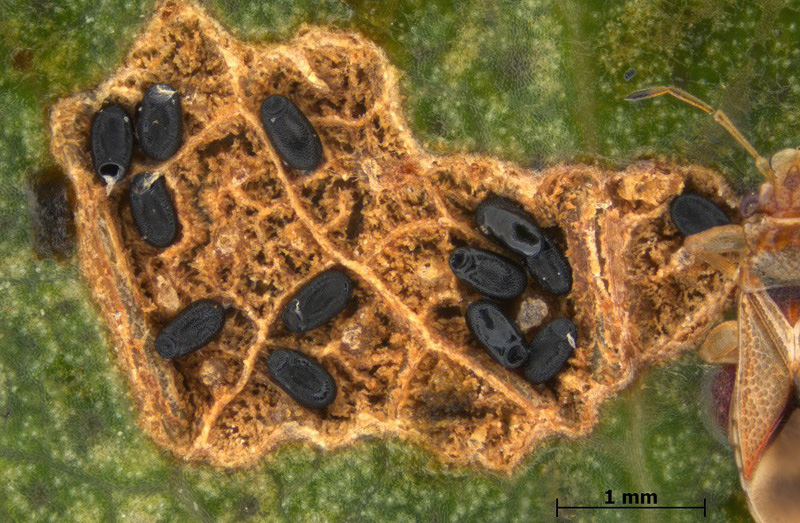
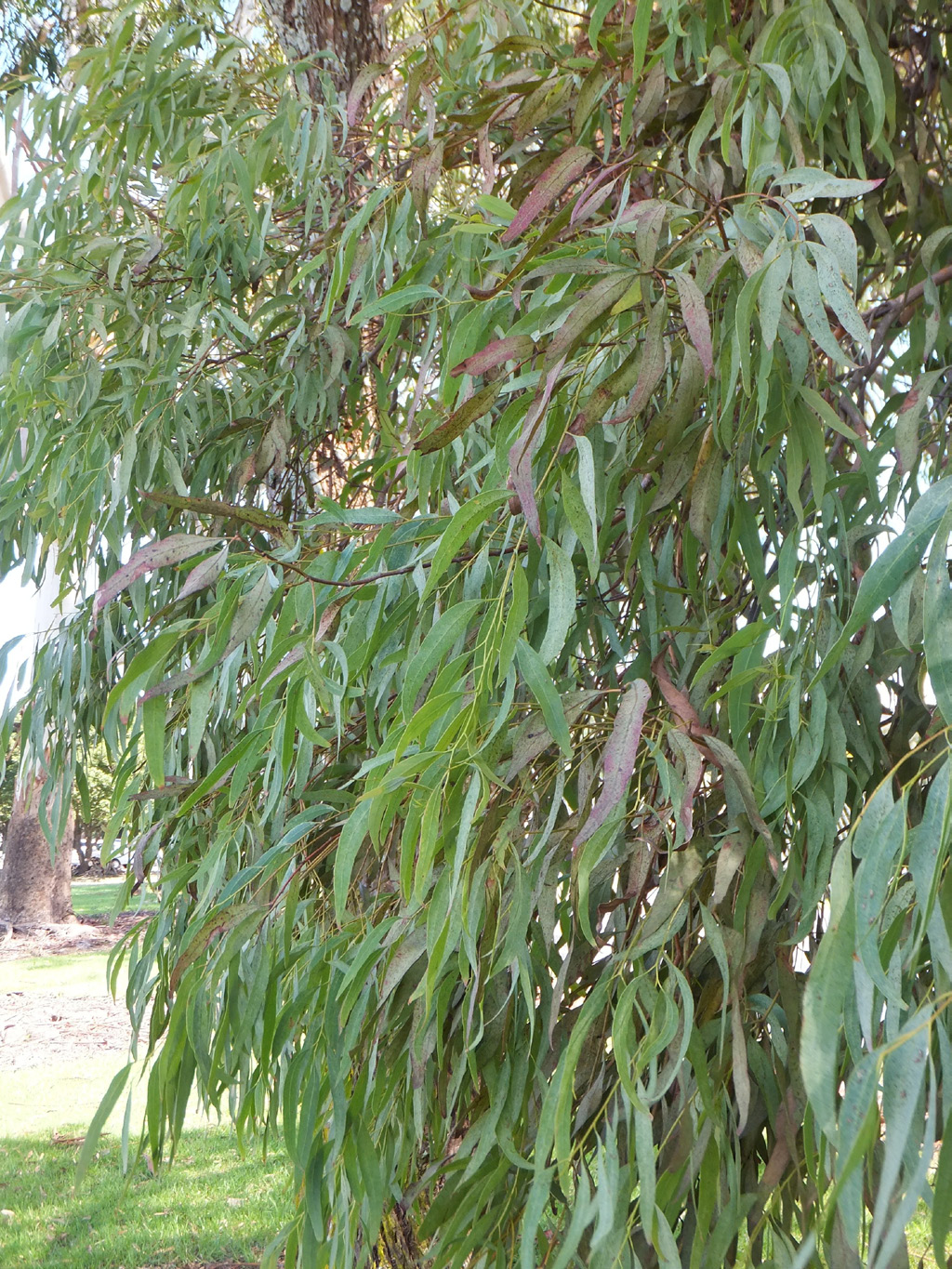
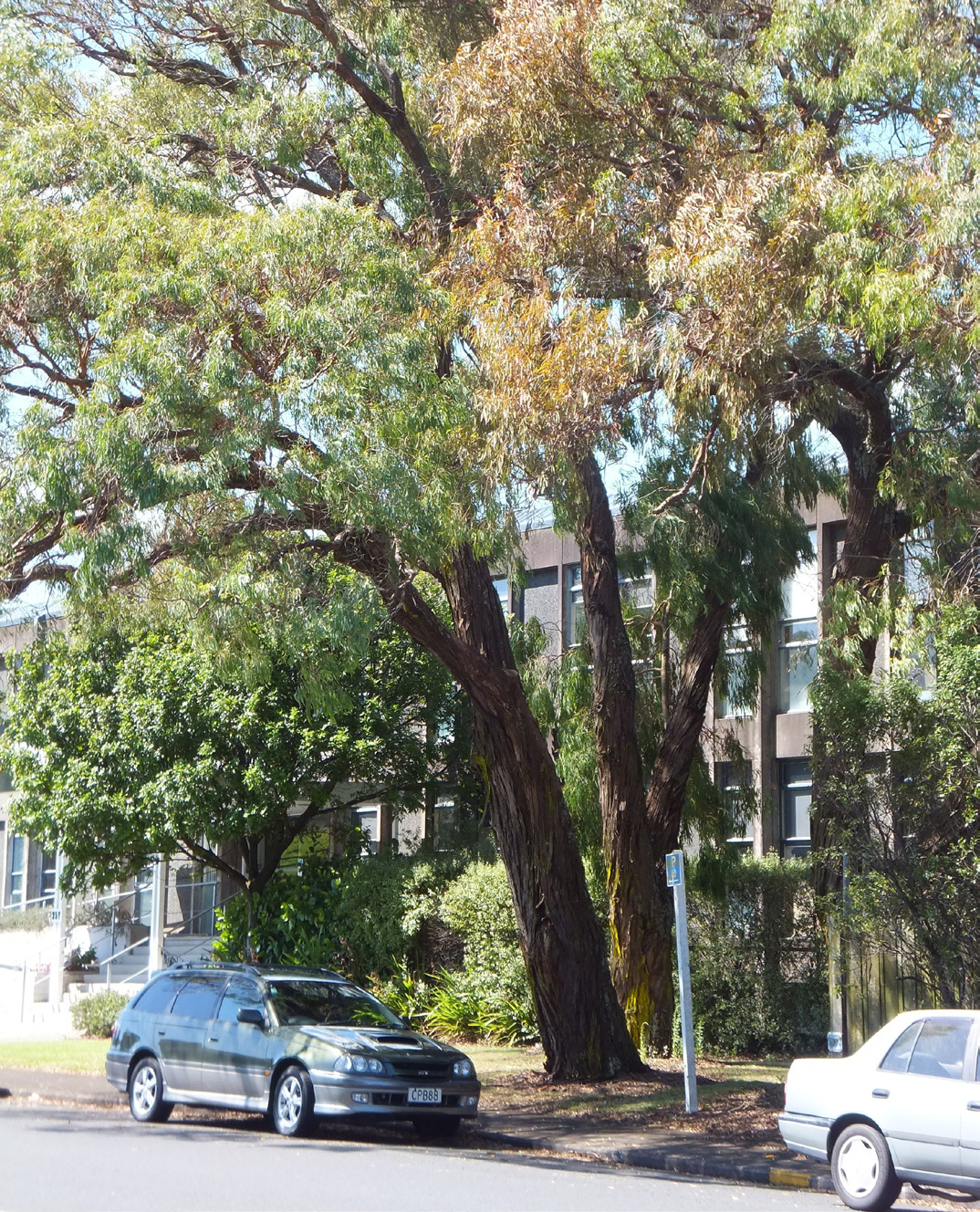
The family Thaumastocoridae consists of three subfamilies, none of which are represented in the New Zealand fauna. The subfamily Thaicorinae contains one genus from Thailand and the subfamily Xylastodorinae contains two genera from Central and South America. A further subfamily, the Thaumastocorinae, is represented by three genera native to Australia and one genus and species from India; these are phytophagous insects with a wide host range (Nadel et al., 2010).
Little was known about T. peregrinus until damaging outbreaks occurred in its native range in the Sydney area, beginning in 2002. Following this initial outbreak, the bug was discovered in Pretoria, South Africa, in 2003. It was identified there as T. australicus, the species for which the genus was first erected (Kirkaldy, 1908). The name Thaumastocoris is of Greek origin and, ironically, translates as “wonderful bug”.
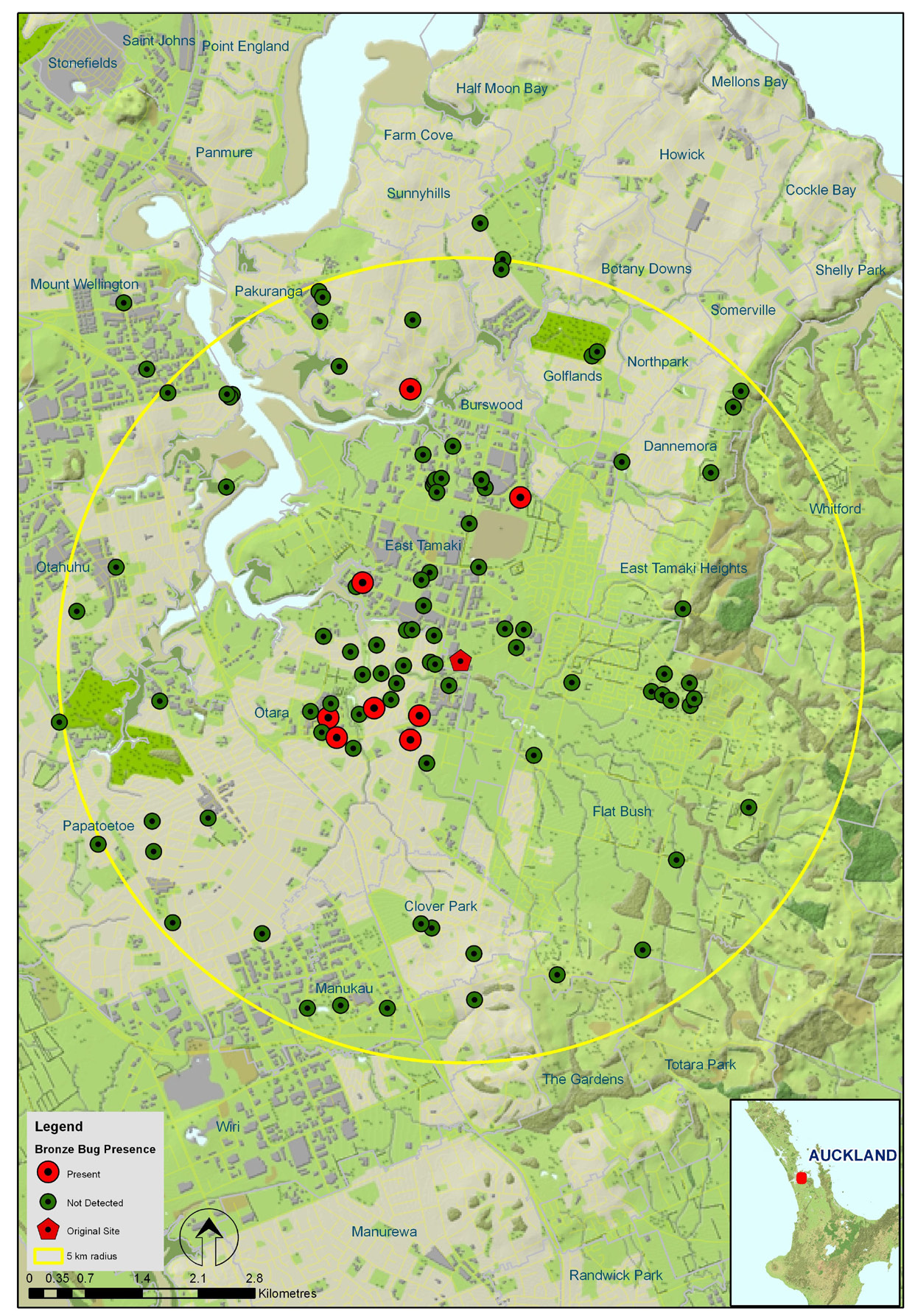
In 2005 a very similar species was found near Buenos Aires in Argentina. However, morphological examination revealed unique characteristics that did not match any known species. It was described as a new species, Thaumastocoris peregrinus. The specific name means “foreigner” and it was presumed also to have been introduced from Australia. However, it was later revealed that this was in fact the same species that had been misidentified in South Africa and was also the dominant species in the Sydney area, with a population in Brisbane as well. This work was done by Nadel et al. (2010) who used DNA barcoding to demonstrate that at least two separate introductions had been made to South Africa, plus another discrete introduction to Argentina. Entry pathways remain unknown. More recently, T. peregrinus has also been found in Italy in 2011 (Laudonia & Sasso, 2012).
Once established in these new areas the bronze bug rapidly spreads to neighbouring countries, presumably by both wind and human-mediated dispersal. In Africa it has spread to Zimbabwe, Malawi and Kenya (Nadel et al., 2010; Noak et al., 2011). In South America during 2008 it was found in both Uruguay (Martinez-Crosa, 2008) and Brazil (Wilcken et al., 2010), and it has also been reported in Chile (Noak et al., 2011) and Paraguay (Solimon et al., 2012).
About 30 species and hybrids of Eucalyptus are known hosts of T. peregrinus. In Australia, recognised hosts are Eucalyptus botryoides, E. camaldulensis, E. dorrigoensis, E. globulus, E. grandis, E. largiflorens, E. microcorys, E. nicholii, E. punctata, E. saligna, E. scoparia, E. sideroxylon, E. tereticornis, and E. viminalis (Noak et al., 2011). The high populations in Sydney have mostly occurred on E. nicholii and E. scoparia (Noak et al., 2009). At least a dozen more hosts have been reported in South Africa, including E. nitens and E. smithii (Nadel et al., 2010). In addition to several of the hosts mentioned above, E. urophylla appears to be a favoured host in Brazil (Soliman et al., 2012).
In New Zealand, an established population exists in East Tamaki, Auckland, where it was first detected. Twelve sites around east Auckland were inspected during the initial investigation, including the site of the first find. E. nicholii trees were found heavily attacked by T. peregrinus but other Eucalyptus species close by were apparently unaffected. In April 2012 a survey was conducted around a 5 km radius from the initial detection site. This detected T. peregrinus on trees about 3.5 km apart (Figure 6). It is possible that T. peregrinus has spread further than this and MPI’s High Risk Site Surveillance programme continues to look for it at other locations in Auckland and further afield.
T. peregrinus is considered a serious pest in Australia, South Africa and South America. In Sydney significant numbers of highly infested trees have been removed, but some urban control has been achieved with systemic insecticides. Microinjections of imidacloprid [SilvaShield® SL, 20 percent (AL)] at a rate of 3–5 mL/10 cm of dbh (diameter at breast height) effectively controlled T. peregrinus for two to three years on E. scoparia (Noak et al., 2009). As a long-term management option, semiochemicals (chemicals used in plant/insect and insect/insect communication) are suggested for use, along with other pest management strategies (http://www. nctforest.com).
No effective biological control agent is reported for the bronze bug. However, the egg parasitoid wasps Cleruchoides noackae (Hymenoptera: Mymaridae) and Stethynium sp. (Hymenoptera: Mymaridae) have been found to attack T. peregrinus eggs in Australia (Lin et al., 2007). Biological control using C. noackae is at present the main international focus of control efforts. This work was started in South Africa and is also being pursued in South America. In Chile, releases of the parasitoid were made in 2010 but it has not been determined as yet whether they were successful (Anon, 2010). The lacewing Chrysoperla externa (Neuroptera: Chrysopidae) is reported as a predator of T. peregrinus in Brazil (Wilcken et al., 2010).
In New Zealand this insect may not be eradicable as it appears to be well established, and there do not appear to be any effective eradication methods. Potential next steps are being considered.
REFERENCES
Anon (2010) SAG libera controlador biológico del chinche del eucalipto - SAG released biological control of eucalyptus bug- June 2010 http://www.sag.cl/OpenNews/asp/pagVerRegistro.asp? argInstanciaId=1&argRegistroId=709 Accessed 27 April 2012
Carpintero DL, Dellapé PM (2006) A new species of Thaumastocoris Kirkaldy from Argentina (Heteroptera: Thaumastocoridae: Thaumastocorinae). Zootaxa 1228: 61–68.
Laudonia S, Sasso R (2012) First record of the bronze bug, Thaumastocoris peregrinus Carpintero & Dellapé (Heteroptera: Thaumastocoridae), a new exotic pest of Eucalyptus trees in Italy. http://www.eppo.int/QUARANTINE/Thaumastocoris_peregrinus/ Thaumastocoris_peregrinus.htm
Lin N-Q, Huber JT, la Salle J (2007) The Australian genera of Mymaridae (Hymenoptera: Chalcidoidea). Zootaxa 1596: 1–111.
Martinez-Crosa G (2008) Thaumastocoris peregrinus Carpintero & Dellapé, 2005 (Heteroptera: Thaumastocoridae): new pest found in eucalyptus in Uruguay. In: IUFRO Recent Advances in Forest Entomology, Pretoria, South Africa, 32–33.
Nadel RL, Slippers B, Scholes MC, Lawson SA, Noack AE, Wilcken CF, Bouvet JP, Wingfield MJ (2010) DNA bar-coding reveals source and patterns of Thaumastocoris peregrinus invasions in South Africa and South America. Biological Invasions 12: 1067–1077.
Noak AE, Cassis G, Rose HA (2011) Systematic revision of Thaumastocoris Kirkaldy (Hemiptera: Heteroptera: Thaumastocoridae). Zootaxa 3121: 1–60.
Noak AE, Kaapro J, Bartimote-Aufflick K, Mansfield S, Rose HA (2009) Efficacy of Imidacloprid in the control of Thaumastocoris peregrinus on Eucalyptus scoparia in Sydney, Australia. Arboriculture & Urban Forestry 35(4): 192–196.
Soliman EP, Wilcken CF, Pereira JM, Dias TKR, Zaché B, Dal Pogetto MHFA, Barbosa LR (2012) Biology of Thaumastocoris peregrinus in different eucalyptus species and hybrids. Phytoparasitica. In press.
Wilcken CF, Soliman EP, Nogueira de Sá LA, Barbosa LR, Dias TKR, Ferreira-Filho PJ, Oliveira RJR (2010) Bronze bug Thaumastocoris peregrinus Carpintero and Dellapé (Hemiptera: Thaumastocoridae) on Eucalyptus in Brazil and its distribution. Journal of Plant Protection Research 50(2): 201–205.
Stephanie Sopow
Scion, Forest Protection
Rotorua
Sherly George
Ministry for Primary Industries
Investigation Diagnostic Centres and Response – Auckland
Nicholas Ward
Ministry for Primary Industries
Investigation Diagnostic Centres and Response – Auckland



